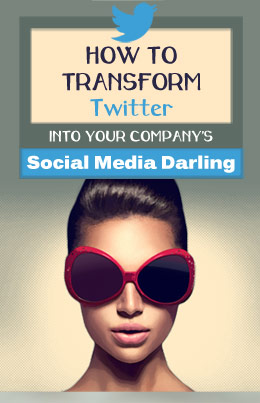Twitter Pros & Cons for a Business
Social Media Links:
![]() Twitter is a microblogging and social networking website. It has over 330 million monthly active users. It can be used for both business and personal reasons. As a small business, you can participate in Twitter to listen to and interact with your customers. Many restaurants, for example, are jumping in and using the free social service to post special events and coupons. On Twitter you can also show off your expertise and offer advice to others. It is a great tool to find out what others are saying about your company.
Twitter is a microblogging and social networking website. It has over 330 million monthly active users. It can be used for both business and personal reasons. As a small business, you can participate in Twitter to listen to and interact with your customers. Many restaurants, for example, are jumping in and using the free social service to post special events and coupons. On Twitter you can also show off your expertise and offer advice to others. It is a great tool to find out what others are saying about your company.
You can follow anyone on Twitter, and anyone can follow you. It's common for strangers to follow your feed. People who take interest in what you have to say become known as your FOLLOWERS. Once they choose to follow you, you can update them about things of various natures. Your updates or posts will appear in their timeline. When you write or post a short message on Twitter, it's called TWEETING. TWEETS are posts of up to 280 characters.
Twitter Pros for a Business
- Twitter is easy to use.
The beauty of Twitter lies in its simplicity. Compared to other community-oriented web services, Twitter is simple and straightforward. During registration, it will take you a just a few minutes to join.
- Twitter has doubled the character limit of a tweet.
This announcement was made on 11-7-17 with mixed reviews. But, it is now easier to compose a thoughtful tweet with 280 characters instead of only 140.
- You can create as many accounts as you want.
Followers are considered friends. Once they follow you through your tweets, you can follow them back. There is only one main screen, so you never have to search around for what you're looking for.
- Twitter can help consumers feel a connection with you.
This promotes trust in your business. You become part of a community where you can discuss your products or services. You may find that you interact more with other industry professionals on Twitter instead of consumers, but that can have benefits too.
- Twitter has brought back chronological timelines.
It is bringing back the classic reverse chronological timeline as an option for its users. Twitter switched to an algorithm-based timeline several years ago, eliminating its reverse chronological feed. You no longer saw the latest tweets, but ones that were considered relevant to you by an algorithm. By early 2017, many users were complaining about seeing tweets from people they didn’t follow. Unfortunately, if you choose the chronological feed view, it may not be permanent. Twitter may switch back to the algorithmic feed if you've been away for a while. If Twitter does switch your feed back to the algorithm-based view, you’ll get a notification from Twitter saying that it has done so.
-
Twitter has introduced 'Safe Search.'
Its "safe search" tool promises to remove from search results any tweets that contain "potentially sensitive content" as well as those from blocked or muted accounts.
- Twitter now prevents 'banned users' from creating new accounts.
Its new policy targets users that set up multiple profiles purely to abuse and harass others.
- Twitter has added emojis.
To send an assortment of icons, users now can click the smiling icon on the bottom right corner of the tweet box.
Twitter Cons for a Business
-
TWITTER REQUIRES frequent monitoring.
You need to pay attention to what users are saying about your business on Twitter. When customers have an issue with your company, they may first post an angry tweet instead of filling out your online form or sending you an email. You need to be able to respond appropriately to these complaints on Twitter.
- Twitter has no "Edit Tweet" button.
Users want the ability to edit tweets after they've sent them, rather than having to delete them and start again. - User growth is predicted at less than 1% in the United States.
Emarketer predicts that Twitter will only add 500,000 American users in 2019.
-
The tweets that receive the most attention tend to be those related to news stories.
If it's hard to fit trending hashtags into your campaigns, you may struggle to gain much visibility. A hashtag is a word or phrase preceded by a hash mark (#) that is used within a TWEET to identify a related keyword or topic of interest. Whenever a user adds a hashtag to their post, it becomes "searchable" by other users.
- The wrong Twitter brand strategy could damage your company's reputation.

